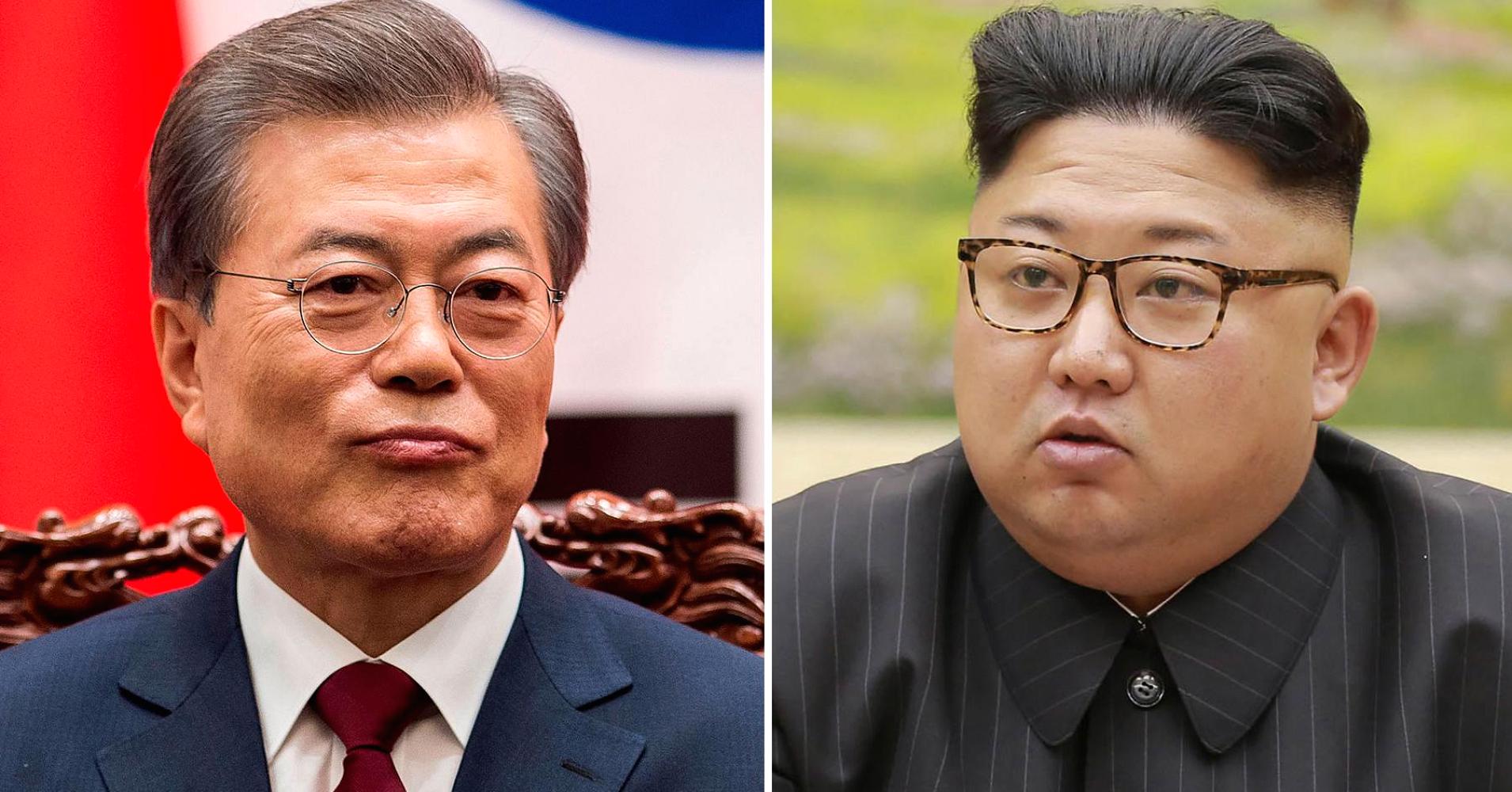
When North Korean Premier Kim Jong Un and South Korean President Moon Jae-in sit across from each other on April 27 to discuss peace and denuclearization, they will share a common language and a 2,000-year history.
Leaders of the two nations – which are technically at war —have only met twice since the peninsula was divided in 1948. But the greatest contrast will be their economies. Some market watchers believe Kim Jong Un’s suspension of North Korean nuclear tests has strings attached. The leader’s statement at a ruling party meeting last Friday included a pledge to seek a favorable international environment for economic development so he can boost his nation’s economy.
Translated that means seeking the lifting of trade, financial and energy sanctions that hardened every time North Korea detonated a nuclear bomb. His potential pitch: North Korea as a frontier market offers a central location in a booming region encompassing China, Japan and South Korea. It also has rare earth and other minerals estimated to be worth $6 trillion. North Korea’s reserves of gold, copper, zinc and magnesite could attract foreign buyers beyond China.
The economy dichotomy between the divided nations is striking. South Korea is Asia’s fourth (and the world’s 11th) largest economy, a leading manufacturer of high-tech products, a global trader that enjoys a first-world infrastructure and a robust democracy.
By contrast, North Korea‘s Marxist economy is a tiny fraction of the size of its southern neighbor (15 to 30 times smaller, by some estimates). Kim Jong Un rules a country that has suffered famine, depends on China for food and fuel and has poured its limited resources into creating an arsenal of nuclear bombs and intercontinental ballistic missiles. The U.N. estimates 41 percent of the population is undernourished.
Yet despite the North’s nuclear tests and the verbal exchanges with President Donald Trump before the sudden turn to dialogue, the South Korean economy has remained remarkably steady. The OECD estimates South Korea will grow at a 3 percent rate through 2019. The Korean stock market index (KOSPI) hit a new high of 2,589.19 in January, even as Trump was declaring that his nuclear button was bigger than Kim’s.
“Historically, the South Korean economy has been largely immune to concerns about security from North Korea,” said Korea expert Marcus Noland, executive vice president and director of studies at the Peterson Institute for International Economics. After years of bluster and threats, Korean investors tend to disregard the tensions along the border.
More from Global Investing Hot Spots:
The $5 billion South Korean start-up that’s an Amazon killer
Trade war with US could tip China’s debt-ridden economy
According to the Bank of Korea, South Korea’s central bank, North Korea’s 2016 GDP in real terms stood at 32.0 trillion won ($28.50 billion), a fraction of South Korea’s 1,508.3 trillion won ($1.34 trillion). South Korea’s per capita GDP reached $30,000 last year and could surpass Italy in 2018.
Before the latest round of sanctions, the bank estimates North Korea’s GDP grew by nearly 4 percent in 2016, after shrinking 1.1 percent from a drought a year earlier. (North Korea does not issue economic figures, so South Korea’s central bank bases its estimates from intelligence sources.) Seoul’s trade volume also dwarfs Pyongyang’s. “The South trades as much in one day as the North in a year,” said Noland.
South Korea also has developed a vibrant start-up economy, with several companies, such as Coupang and Yellow Mobile, reaching unicorn status — valued at more than $1 billion. Last year, according to the Korean Venture Capital Association, investors put 2,380.3 billion won ($2.23 billion) into Korean start-ups, up 9.3 percent over 2016.
South Koreans have learned to live with threats from the North. “The difference in perception inside and outside of Korea could not be more different,” said Bom Kim, founder and CEO of Coupang, Korea’s largest online retailer, which received a $1.4 billion investment from Softbank in 2015. “If you surveyed a hundred people in the country, there’s no panic. A lot of this is theater, but if you watched the news on TV you would think something was about to break out.”
In the long term, South Korea faces some thorny economic problems. The OECD says its economy is slowing due to policies aimed at protecting small businesses rather than making them more efficient and because its population is aging. While the manufacturing sector includes world class conglomerates like Samsung and LG, productivity in the service sector is low.
If geopolitical tensions ease with its Northern neighbor, South Korea would probably gain favor with foreign investors now fearful of political risk. But it’s the North Korea that could really see a boost, economists say.
There could be huge benefits from reunification, although there is no sign this could happen anytime soon. In 2015, the Korea Institute for International Economic Policy, a government think-tank, estimated that a unified Korea could generate an $8.7 trillion economy by 2055, 1.7 times the projected size of South Korea alone.
No one will guess the possible outcome of talks between the two Koreas or – if it happens – between Kim Jong Un and President Trump. But if the past is any indication, the South Korean economy will keep plugging along, regardless of the outcome of negotiations.

